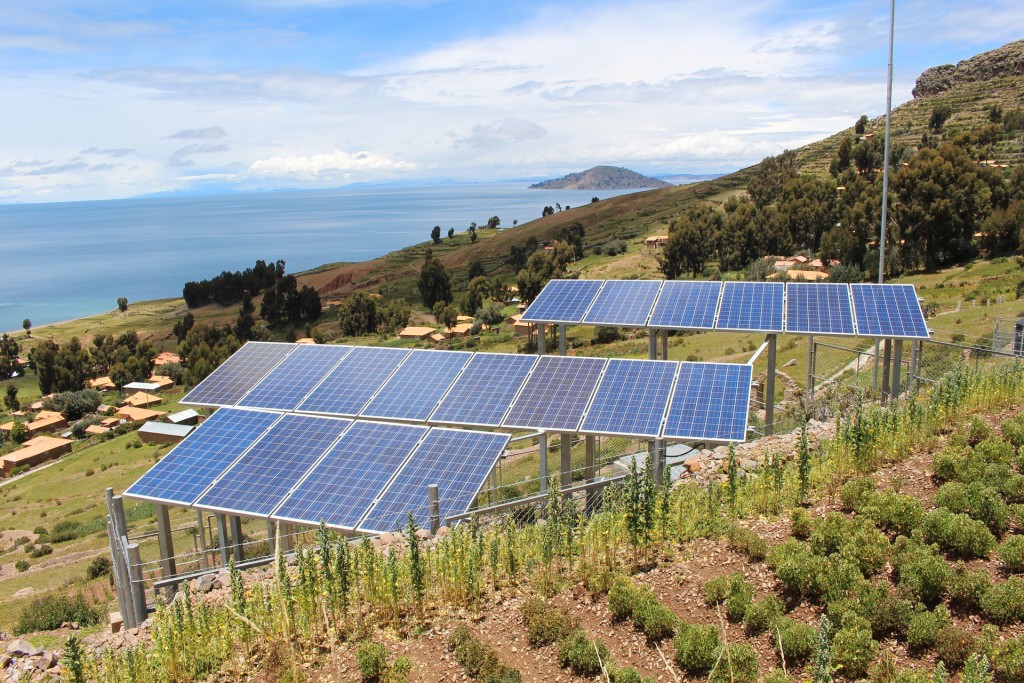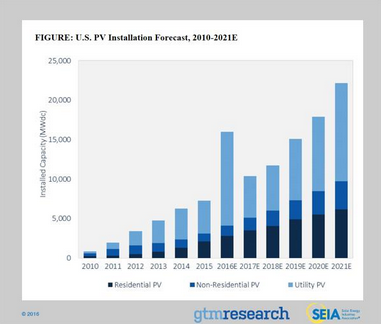
As renewable energy moves from the sidelines to the main playing field, here is a brief look at the coming trends in green and clean energy in 2016 and beyond.
Solar is Setting the Pace
The solar energy sector is growing by leaps and bounds. 2016 will be a banner year with 16 gigawatts of solar expected to be installed, more than double the 7 Gigawatts installed in 2015. This growth has accelerated faster than normal for 2016 as the Investment Tax Credit for solar was set to expire. This has been extended, so future growth will return to the norm.
The industry is ramping up for the long term. There are now more than 1 million installations in the US and close to 100 gigawatts are expected to be installed in the next 6 years. The acceleration in installations comes as financing mechanisms improve through securitizations and solar loans drive distributed generation and residential solar, and costs continue to decrease in general.

Solar may only supply 2% of global electricity currently, but futurists like Ray Kurzweil are predicting it to overtake traditional power much faster than mainstream projections. As one of my colleagues recently said, expect to see solar on every rooftop in the US in the next ten years.
Energy Storage
Cheap, ubiquitous storage has been a holy grail for the energy sector for decades. While storage is still expensive, in many ways its cost structure is where solar was 10-15 years ago. States including California and New York have required battery storage to be added to the power mix and in territories such as PJM (covering states including New Jersey and Pennsylvania) batteries have been making the utility grid more robust through voltage and frequency regulation.
Personally, I am not sold on batteries as the primary long term solution. The cost of storage still has a ways to go and the efficiency of batteries that can maintain their charges for the long term and thus be more efficient for power storage, is a work in progress. This being said, storage will be an important factor going forward. One of my favorite companies in this area is Aquion Energy. Unlike lithium ion battery makers, Aquion utilizes saltwater chemistry to facilitate long term energy storage. They recently raised another $33 million round and while they have a long way to go, they are definitely one to keep an eye on. Another leading entrant is Stem, which combines software and storage to provide leading solutions for commercial and grid side customers.
Big Data
Big data has arrived in force in the energy sector. Numerous companies are partnering with existing utilities to provide better insight into customers’ habits and allow executives to make quicker, more informed decisions. Simultaneously, customer facing solutions seek to put the power in the hands of industrial, commercial and residential customers. Opower is a poster child, after a successful 2014 IPO. Oracle announced earlier this week that they will be acquiring Opower for $532 million.
Stem plays on both sides of the hardware / software divide, using big data and analytics as a core part of its offering. Silver Spring Networks is another leading entrant, recently pivoting to brand itself as an Internet of Things (IoT) company underpinned by data. Still other companies are focused on areas including real estate energy portfolio management and solar performance, utilizing the availability of sensors and networks to improve the bottom line.
The Modern Grid
Solar, storage and big data all play into the evolving modern electricity grid. We are at the beginning of a fundamental restructuring of energy procurement and supply, with customer driven solutions such as the Tesla Powerwall, Sonnen Batterie, and rooftop solar potentially undercutting the rate based plodding of traditional utilities. The smart grid is bringing with it intense debates on net metering for solar (allowing customers to sell back excess production to the grid) in many US states and the excitement around New York’s Reforming the Energy Vision (REV) that potentially will offer resilient, clean energy across the State. The grid is never going to be a fast moving area due to its structure and regulatory requirements, but the times are definitely a changing.
This is only a brief update on some of the more interesting areas to look out for in the evolving renewable energy landscape. Stay tuned for more.
Ed Sappin is the CEO of Sappin Global Strategies, a strategy and investment firm dedicated to the innovation economy. Follow him on Twitter @esappin.
